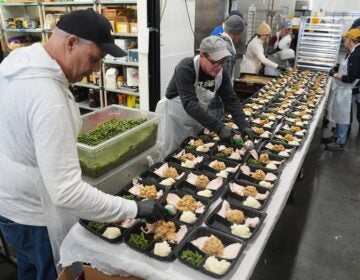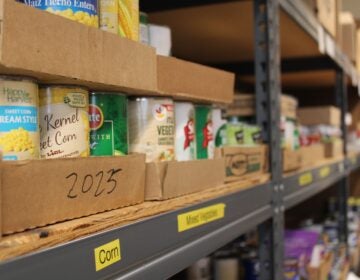Recipe calls for radio frequencies to pasteurize eggs
Using radio frequencies to pasteurize eggs makes them safe for use in recipes calling for raw or partially cooked eggs.
Listen 3:37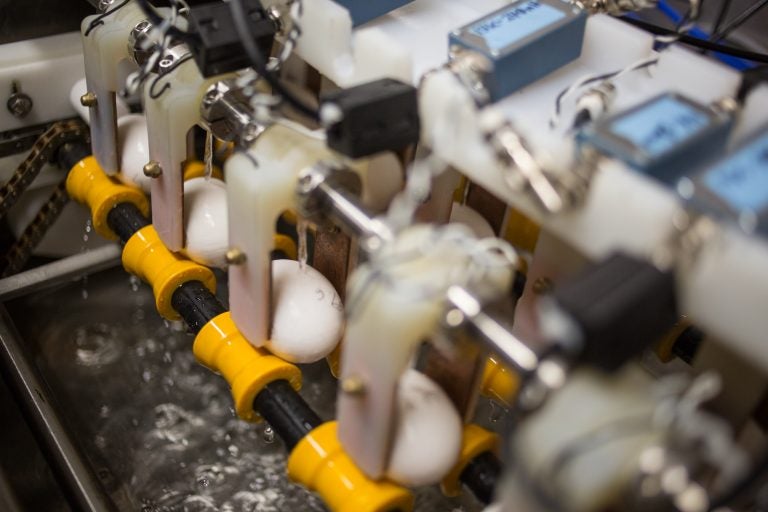
A dozen eggs are pasteurized via radio frequency in a prototype machine. Dr. David Geveke, a researcher at the USAD ARS, and Christopher Brunkhorst, a researcher from Princeton University, are working to develop a way to pasteurize eggs via radio frequencies. The project is in its 6th year, they hope to begin introducing it to the market in the next few years. (Emily Cohen for WHYY)
An unlikely partnership between the U.S. Department of Agriculture and the Princeton Plasma Physics Lab could yield changes that would make it safe to sample raw cookie dough.
Representatives of those two entities have pioneered a way to use radio frequencies to help pasteurize eggs to make them safe to use in any recipe that calls for uncooked or partially cooked eggs.

At the USDA Eastern Regional Research center in Wyndmoor, just outside of Philadelphia, Chris Brunkhorst recently watched eight eggs spinning under a stream of water.
“We have water flowing over the egg to take away excess heat,” said the engineer. “The idea is we want to concentrate the heat in the yolk. We don’t want to heat up the egg white. The white is delicate and easily damaged.”
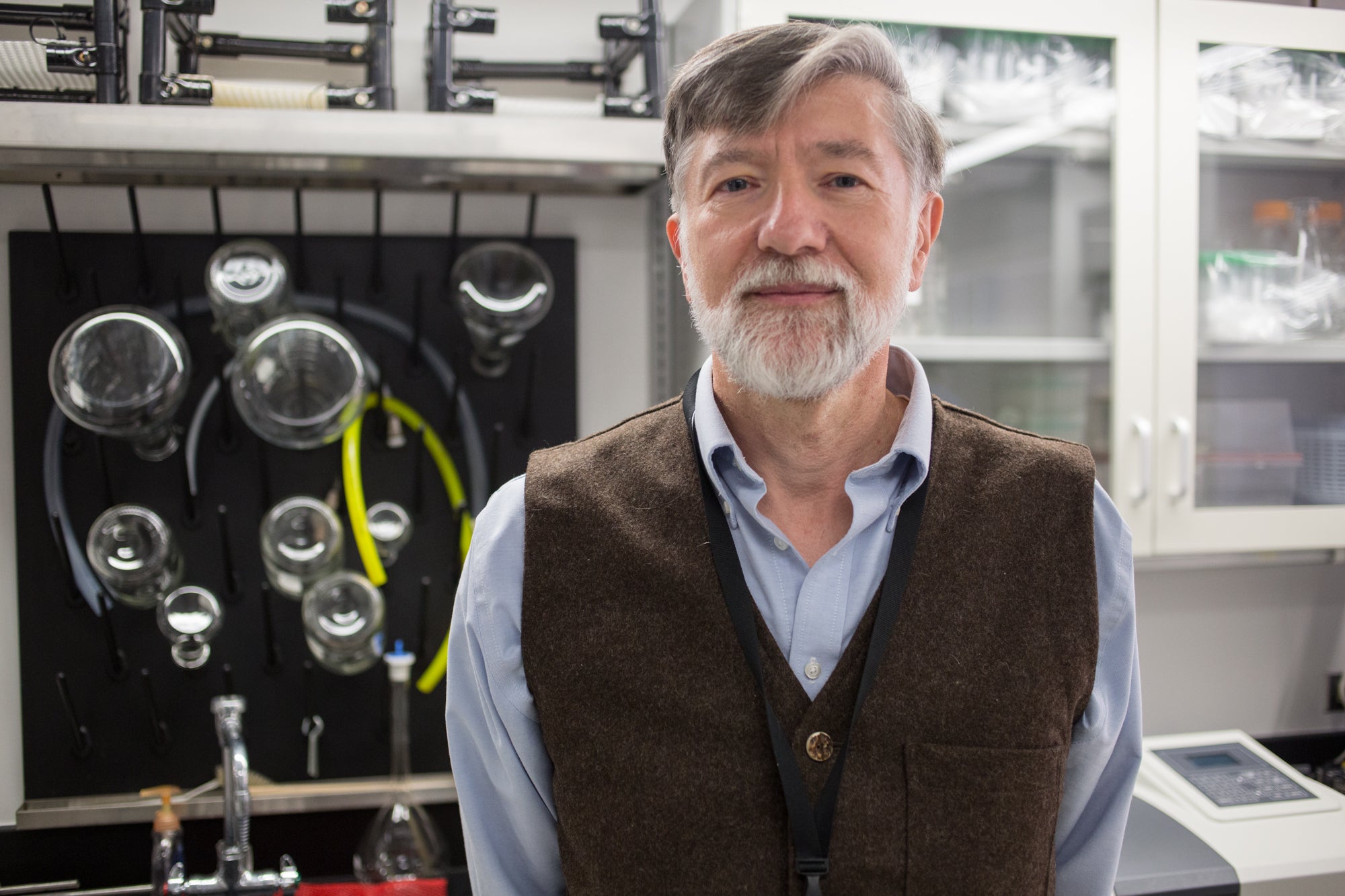
Using about the same amount of energy as a microwave, the machine pulses very high radio frequencies — or RF — that heat the egg and poke holes in the membranes of bacteria that can be passed on by an infected chicken.
Brunkhorst works at the Princeton Plasma Physics Lab, where he heats up plasma with RF to enable a nuclear fusion reactor. Pasteurizing eggs is his side project.
“What we’re doing here is just plain old heating. You’re putting electricity in something and heating it up,” he said.
He met USDA researcher Dave Geveke 15 years ago when Geveke was working with juice, which can be pasteurized by RF at much lower frequencies than eggs. Traditional pasteurization uses only heat — the two researchers figured out that you didn’t need as much heat when combined with RF. They says the lower heat spares the enzymes and vitamins that make up a fresh taste.
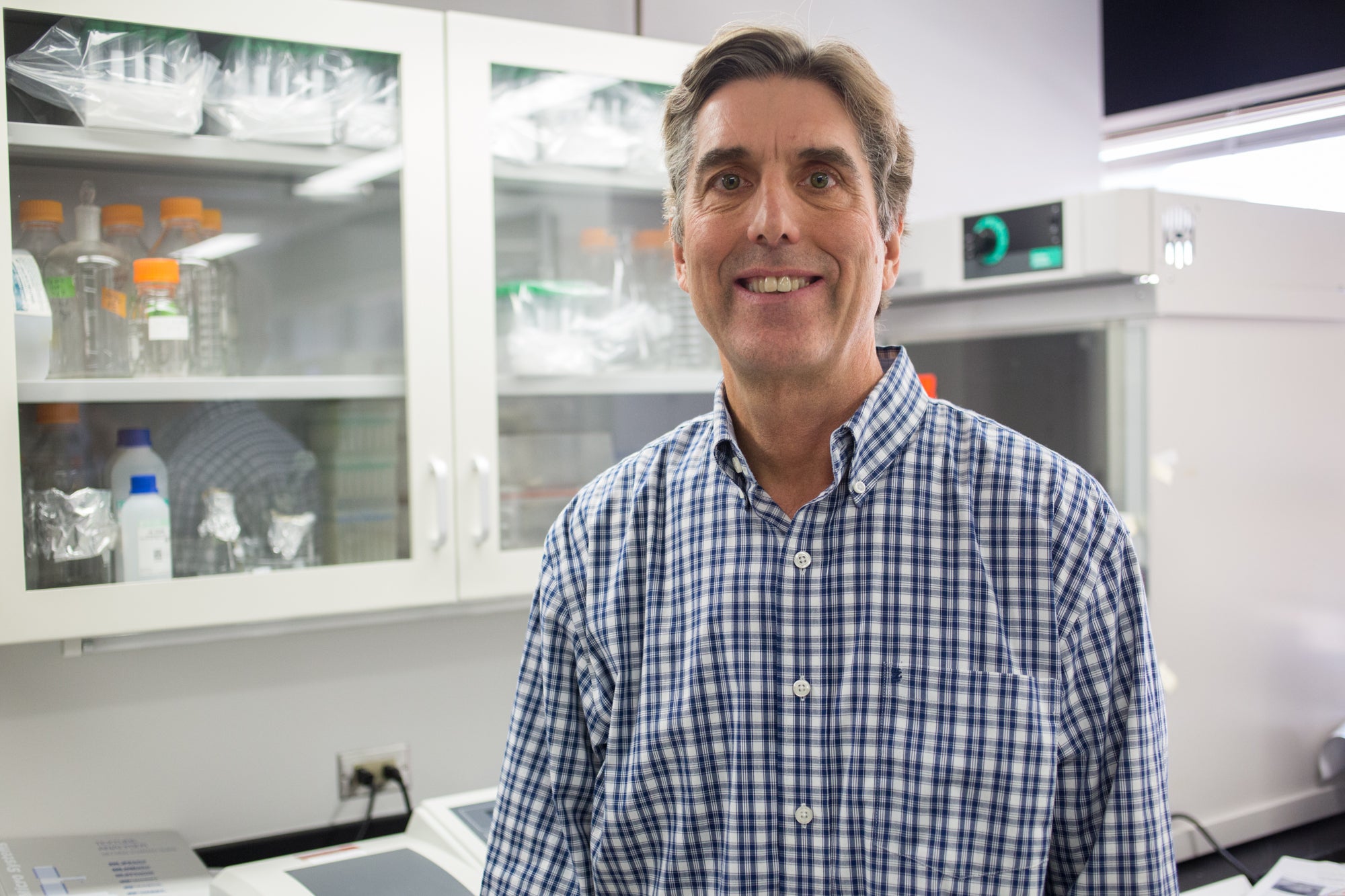
“Cider is very different today,” said Brunkhorst. “When I was a kid, it was all unpasteurized, and I notice a flavor difference very strongly.”
He thought a his pitch for a different pasteurization technique would find a receptive audience. But consumers had grown accustomed to the taste of cider, and companies weren’t interested in the extra expense.
So the duo looked for a new target market.
“People are used to the flavor right now of pasteurized milk; it changes that flavor too,” said Geveke. “But with the egg, it’s a little more serious. It looks really different, and it bakes really different.”
Hundreds of cakes were baked to test pasteurized eggs in the name of food science, he said.
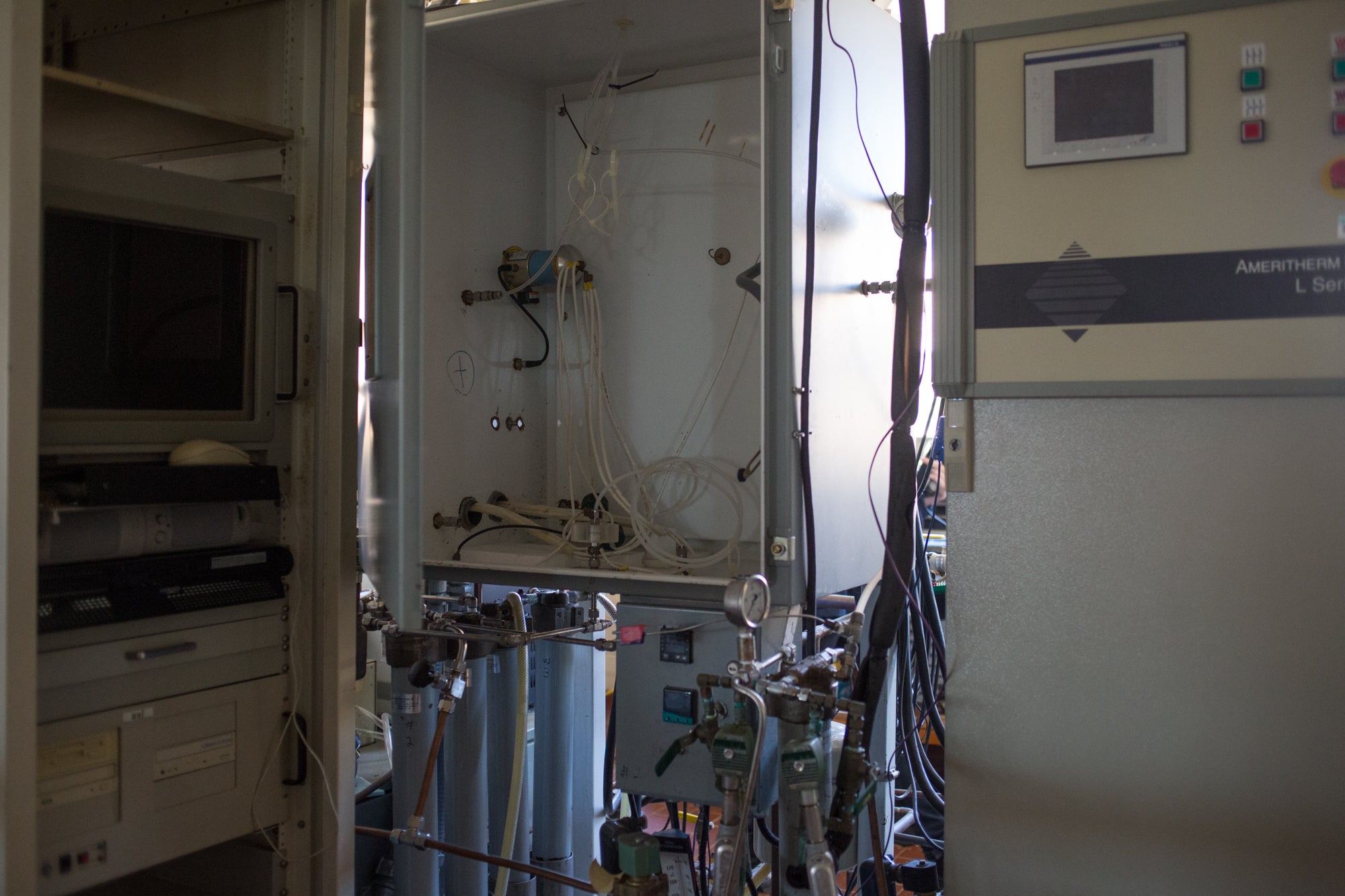
Why focus on eggs?
According to the USDA, egg consumption is rising; we’re each eating about 280 eggs a year — up from 256 in 2015.
And Pennsylvania is helping make that possible, producing about 8 million eggs each day. Those eggs then undergo a rigorous screening, washing and refrigeration process under federal rules.
Still, as salmonella and other bacteria grow resistant to antibiotics, hospitals and nursing homes are now relying more on dried egg powder in preparing meals.

Geveke says the egg industry is interested in RF, which reduces the cost of in-shell pasteurization.
“You can get pasteurized eggs now, but they are slightly damaged. We want to make an egg that is as close to fresh as possible,” said Geveke.
To prove that a pasteurized egg could be as good as a fresh egg, he and his team employed whisks.
“When we take the pasteurized eggs to test them we bring them out here and we bake angel food cakes and meringues,” he said gesturing to the test kitchen.
With an industry backer, Brunkhorst and Geveke plan to go to market in 2020 with a machine that will pasteurize eight eggs a minute. It will be their first patent to go mainstream.
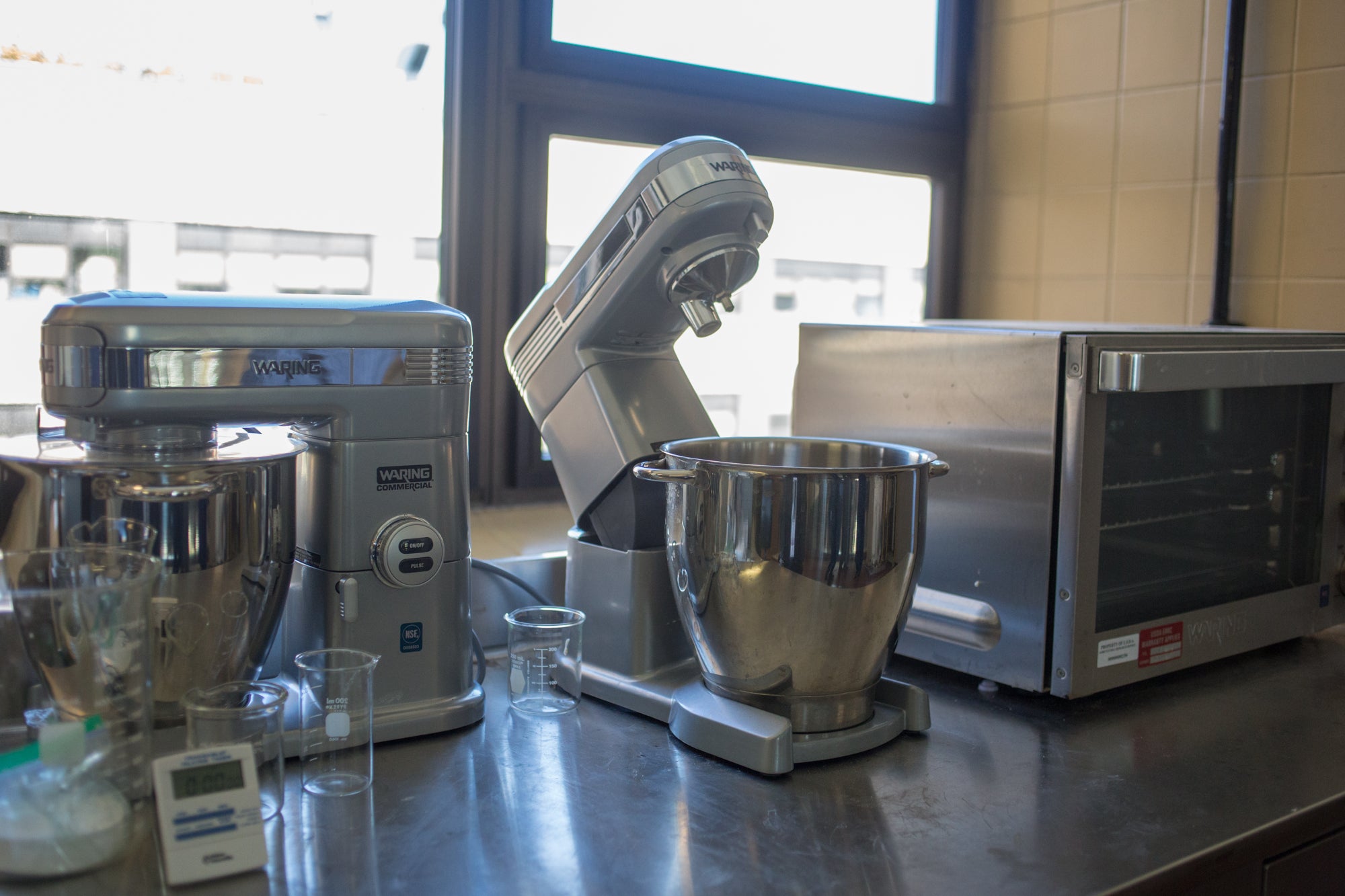
“Both of us are waiting to retire,” said Geveke.
Brunkhorst says they want to make a dent in the thousands of cases of salmonella reported in the U.S. each year.
“We want to make the world safe for cookie dough,” he quipped.
Still, raw flour in cookie dough could also carry illness-causing bacteria. In 2017, the Food and Drug Administration recalled 10 million pounds of flour because of e coli contamination.

Meanwhile, the USDA has used radio frequencies to sanitize raw fruits and vegetables — as well as partnering with Penn State University to apply radio frequencies to lumber and wood pallets as a way to control invasive species. https://abe.psu.edu/research/bio-based-products/wood-packaging
Maybe flour will be next.
This is a corrected story. An earlier version had the wrong number for how many eggs Pennsylvania produces each year.
WHYY is your source for fact-based, in-depth journalism and information. As a nonprofit organization, we rely on financial support from readers like you. Please give today.


